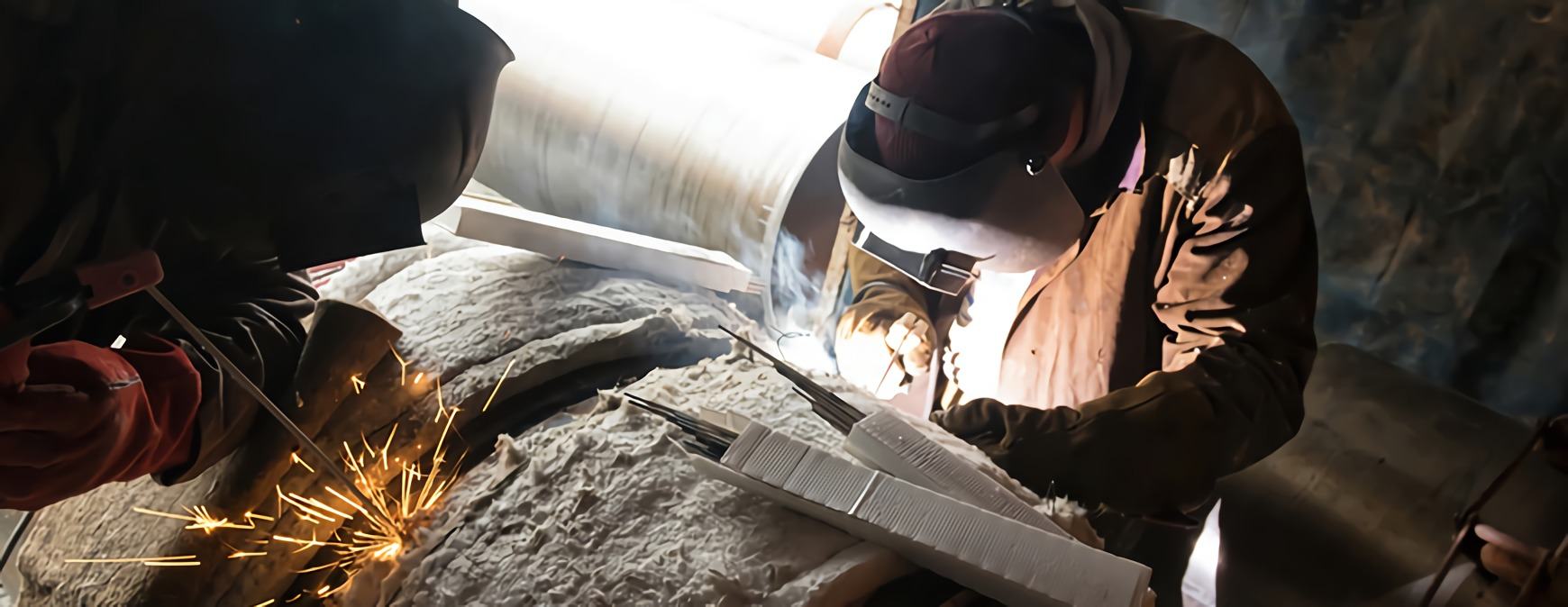
Welder beware: Defects are going to happen.
All welders want to produce a quality product, but mistakes are bound to be made. No one enjoys a successful, lifelong welding career without a few blunders.
Even so, preheating can be your saving grace in many cases. The short story about preheating is, it’s an extra step in the welding process that can help with quality assurance. It’s a precaution against the mistakes that could be made when working with specific types of metals under certain conditions.[1]
What Is Preheating in Welding?
Preheating occurs when heat is applied to the metal prior to welding.[2] Preheating has several methods of application. When selecting a preheating method, consider the thickness of the material and the weldment’s size.
Furnace or Oven
Since furnaces and ovens are usually limited in size, they can be an effective approach for small parts.[3] Large models, however, can be found for bigger weldments.[4]
Have You Considered a Career in the Skilled Trades?
Fill out the form to recieve a no obligation info packet.
Gas Burner or Oxy-Fuel Torch
While flame preheating is among the most common methods because of its relatively simple setup, portability and low cost of the equipment, it can be inefficient and dangerous.[5]
A welder can lose more heat to the surrounding air when using a flame or torch, compared to other methods, and it also comes with the risk of being burned.[6]
Induction Heating
Induction heating is a form of non-contact heating in which the heat is induced electromagnetically instead of by using a heating element.
Traditionally, induction heating has been used for soldering and brazing and other welding processes, but it is becoming more popular for welding preheating, especially for businesses that conduct a high volume of welding.
This process has several advantages[7]:
- Lower cost of welding consumables
- Improved heat quality
- Uniformity
- Reliability
- Ease of use
What Are the Benefits of Preheating in Welding?
The big payoff of preheating is that the product has the mechanical properties it needs.[8] It reduces the thermal shock from the weld and the rate at which the weld cools.[9]
Here are some more specific examples.
It Prevents or Reduces Cracking and Porosity
A slower rate of cooling in the base and weld metal improves the ductility, or ability to bend without failing, of the product. It also allows any hydrogen present to diffuse out, preventing the weld from becoming brittle or porous.
Reduce Stress
Preheating can minimize the thermal gradient that results from high temperatures. Thermal gradients cause shrinkage stresses from thermal expansion and contraction.
Preheating can minimize the defects that these stresses cause[10][11]:
- Distortion
- The formation of martensite
- Cracking
When Should You Preheat Before Welding?
Preheating is an important welding precaution when working with specific types of metals and under certain conditions. Cast iron, high-carbon steels and manganese steels tend to be more brittle and require preheating to improve their weldability.
How Is Preheating Applied When Welding Dissimilar Materials?
Preheating prior to welding dissimilar metals can reduce the potential for stresses, cracking and premature failure.[12]
Thick Metals
Preheating is helpful when welding large, thick plates of metal.
Temperature
When the temperature outside is very low or the plate is cold, preheating can help prevent defects.
Highly Restrained Joints
Highly restrained joints are more prone to shrinkage stresses and benefit from preheating.[13]
Welding Specification
The welding specification or base metal manufacturer may call for welding preheating. Check the provided chart for the preheat temperature range to use.
Other Conditions
Preheating is also useful when welding with small diameter electrodes, on complex shapes or at fast speeds.[14][15]
Ensuring Quality Welds
Preheating preserves quality. Don’t skip out on it. It might just be a precaution, but it can mean the difference between a perfect product and a flawed product.
Competent welding requires a lot of precautions. Read up on more welding safety types to make sure you’re taking all the right steps to produce great work.
Additional Sources
[1] https://www.thefabricator.com/article/arcwelding/preheating-can-be-critical-to-welding-success
[2] Title: Welding Principles and Applications; Author: Larry Jeffus; Delmar Cengage Learning; Seventh Edition; Textbook page 144
[3] http://www.lincolnelectric.com/en-us/support/process-and-theory/Pages/preheat-detail.aspx
[4] https://www.thefabricator.com/article/arcwelding/preheating-can-be-critical-to-welding-success
[5] http://www.esabna.com/us/en/education/blog/what-the-welding-inspector-should-know.cfm
[6] https://www.thefabricator.com/article/arcwelding/preheating-can-be-critical-to-welding-success
[7] https://www.millerwelds.com/resources/article-library/welders-turn-to-induction-heating-for-preheating-stressrelieving
[8] https://www.canadianmetalworking.com/article/welding/welding-preheat-practices-choose-the-right-tool-for-your-job
[9] Title: Welding Principles and Applications; Author: Larry Jeffus; Delmar Cengage Learning; Seventh Edition; Textbook page 144, 656
[10] http://www.lincolnelectric.com/en-us/support/process-and-theory/Pages/preheat-detail.aspx
[11] http://www.esabna.com/us/en/education/blog/what-the-welding-inspector-should-know.cfm
[12] https://www.thefabricator.com/article/arcwelding/welding-metals-of-dissimilar-strengths
[13] http://arcraftplasma.blogspot.com/2016/08/requirement-for-pre-heating.html
[14] https://www.thefabricator.com/article/arcwelding/preheating-can-be-critical-to-welding-success
[15] Title: Welding Principles and Applications; Author: Larry Jeffus; Delmar Cengage Learning; Seventh Edition; Textbook page 144, 656
This blog has been labeled as archived as it may no longer contain the most up-to-date data. For a list of all current blog posts, please visit our blog homepage at https://www.tws.edu/blog/







